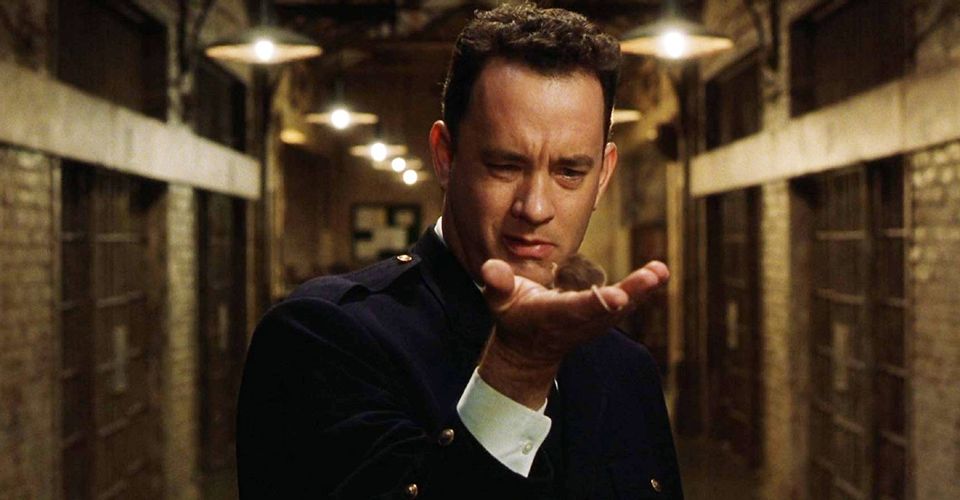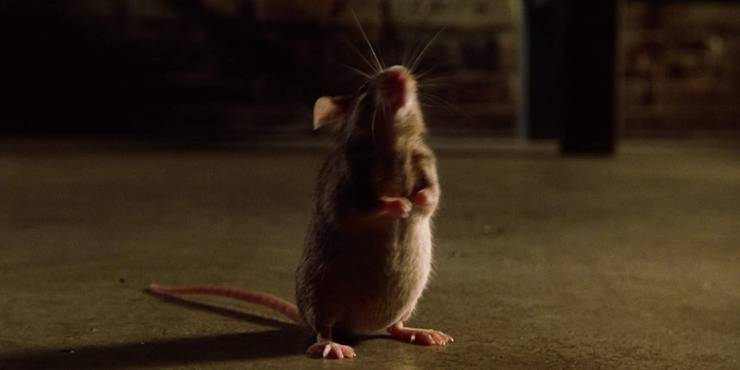The Green Mile: What Mr. Jingles Really Means – Theory Explained

The Green Mile mainly tells the stories of John Coffey and Paul Edgecomb, but here are some popular theories about why Mr. Jingles is also important and what he really means. The 1999 fantasy drama, which is based on the Stephen King novel of the same name, illustrates the morbid, dreary tension that comes along with Edgecomb’s (Tom Hanks) experience working on death row in Louisiana, which is nicknamed “the Green Mile.”
The film is rife with symbolism, much of which relates to Christianity. John Coffey (Michael Clarke Duncan) seems to represent a Christ-like martyr, William “Wild Bill” Wharton an embodiment of evil and the Devil, and the Mile itself likely symbolizes life and all of the suffering that comes with it until death is reached. But there are also layers of meaning present in plot pieces as seemingly unimportant as a small animal. This is the case with Del’s pet mouse, Mr. Jingles.
There’s a slew of theories as to what the little mouse symbolizes within The Green Mile’s story, most of which pertain to the wholesome side of the “good versus evil, light versus dark” type dichotomy that’s ever-present throughout it. One popular theory is that Mr. Jingles represents a sort of comforting angel that keeps Del company until his death. And this certainly makes sense. Under the stressful circumstances of awaiting execution, any little bit of temporary relief can help. And the mouse does bring him a genuine touch of joy. Additionally, Mr. Jingles is believed to represent the small glimmer of light and goodness that still manages to find its way into the Mile, despite the location and circumstances. This theory also makes sense within the context of the film. Even on death row, though there’s plenty of sadness and cruelty, some of mankind’s beautiful qualities still shine through, as well – like healing, kindness, and compassion, among others.

Relating to The Green Mile’s extensive amount of both explicit and implicit commentary on the ideas of good, evil, and judgment, Mr. Jingles is also thought to stand for innocence. After all, the small, defenseless creature literally lives up to the phrase “harmless as a mouse.” And his misfortune with Percy’s initial stomping thematically parallels how innocence isn’t always enough, and how those who have done nothing wrong – like John Coffey – can still face wrongful persecution. And, on that same subject, Mr. Jingles is theorized to represent the story’s prevalent theme of answering for one’s behavior – whether that be good deeds or sins. He’s thought to illustrate how humans are small, powerless, and insignificant when compared to the idea of a higher power in the grand scheme of things.
And this theory is another solid one. Like Mr. Jingles in relation to humans, people are at God’s (or whatever/whoever one might believe in) mercy, awaiting judgment. And, as with the Green Mile’s miniature mascot, depending on the outcome of that helpless judgment, one can face a fate of destruction (like how Percy kills him) or one more in line with compassion and healing (similar to how Coffey resurrects him). Both the novel and film versions of The Green Mile are incredibly intricate, and a great deal of underlying meaning permeates the story’s many layers. It’s a testament to both works that a little mouse like Mr. Jingles has the ability to mean so much.
About The Author


















